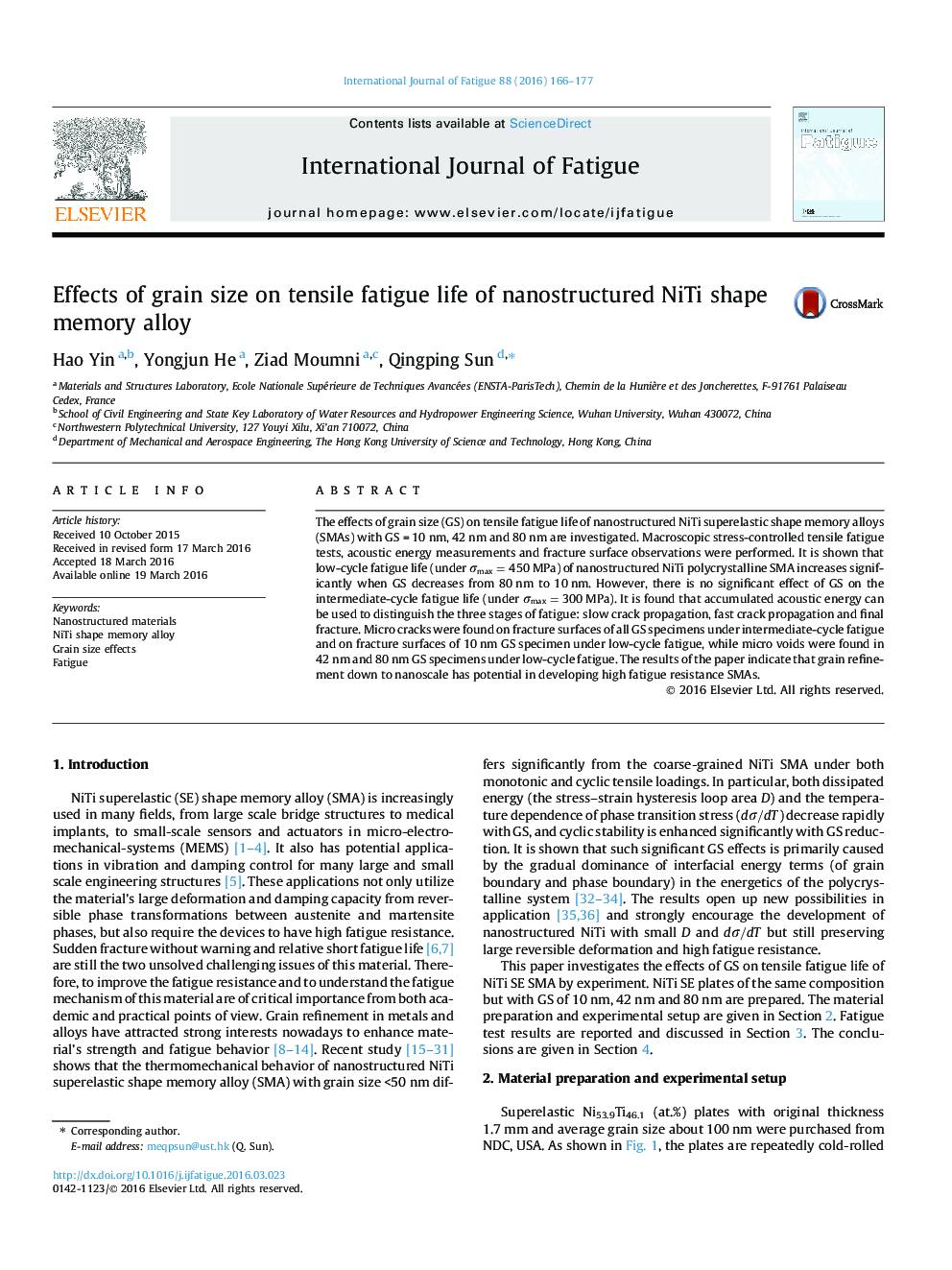| Article ID | Journal | Published Year | Pages | File Type |
|---|---|---|---|---|
| 777531 | International Journal of Fatigue | 2016 | 12 Pages |
•Tensile fatigue lives of nanostructured NiTi superelastic are investigated.•Grain refinement brings significant enhancement of low-cycle fatigue life.•Accumulated acoustic energy can be used to monitor stages of fatigue failure.•Different fracture morphology might indicate different fracture mechanism.
The effects of grain size (GS) on tensile fatigue life of nanostructured NiTi superelastic shape memory alloys (SMAs) with GS = 10 nm, 42 nm and 80 nm are investigated. Macroscopic stress-controlled tensile fatigue tests, acoustic energy measurements and fracture surface observations were performed. It is shown that low-cycle fatigue life (under σmax=450MPa) of nanostructured NiTi polycrystalline SMA increases significantly when GS decreases from 80 nm to 10 nm. However, there is no significant effect of GS on the intermediate-cycle fatigue life (under σmax=300MPa). It is found that accumulated acoustic energy can be used to distinguish the three stages of fatigue: slow crack propagation, fast crack propagation and final fracture. Micro cracks were found on fracture surfaces of all GS specimens under intermediate-cycle fatigue and on fracture surfaces of 10 nm GS specimen under low-cycle fatigue, while micro voids were found in 42 nm and 80 nm GS specimens under low-cycle fatigue. The results of the paper indicate that grain refinement down to nanoscale has potential in developing high fatigue resistance SMAs.
